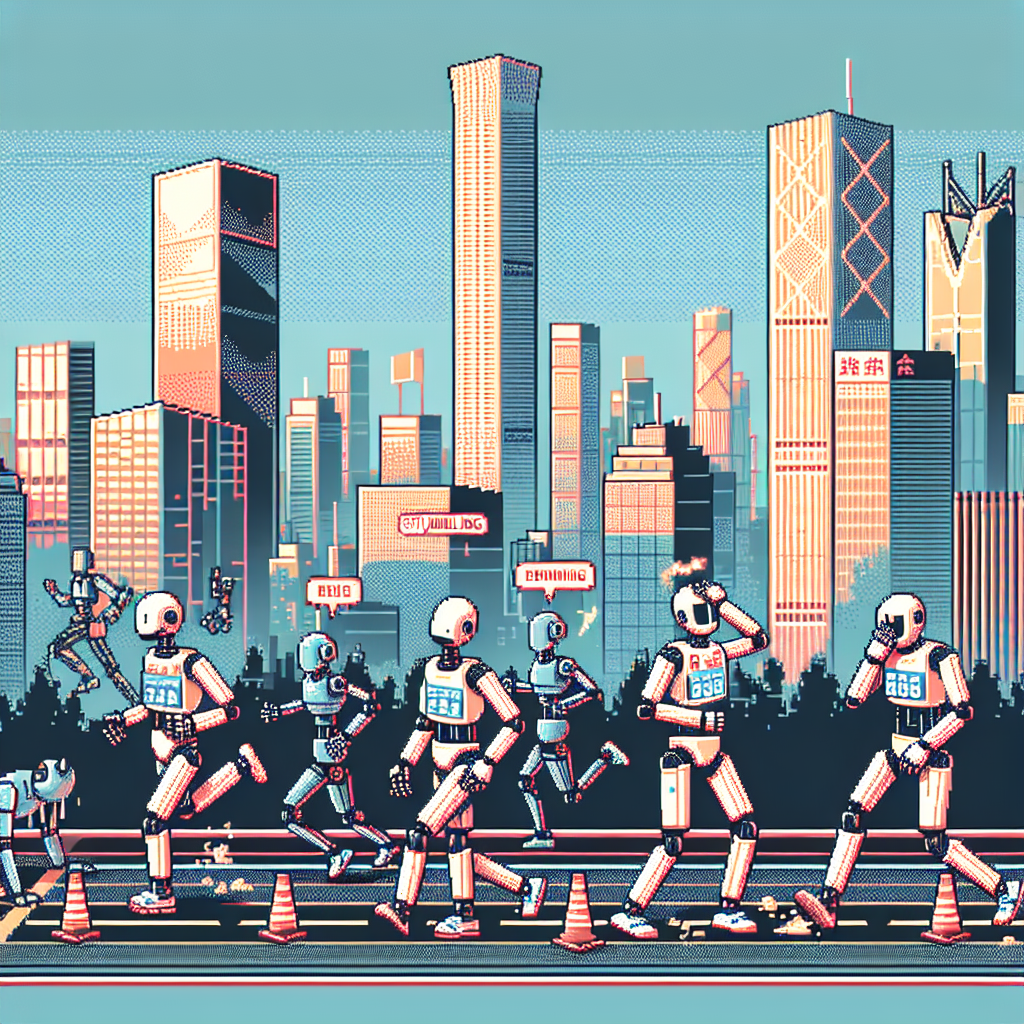Stumbling and Overheating, Most Humanoid Robots Fail to Finish Half Marathon in Beijing - WIRED | Analysis by Brian Moineau
Title: The Great Robot Race: A Marathon of Dreams, Stumbles, and Overheating Circuits
The air was charged with anticipation in Beijing as 21 humanoid robots lined up at the starting line of a half marathon, a spectacle that promised to be a blend of high-tech wizardry and athletic endurance. Yet, as the dust settled, only six of these mechanical marvels managed to cross the finish line. It was a scene reminiscent of an early Olympic event where the spirit of competition was met with unexpected challenges.
This ambitious endeavor was more than just a race; it was a testament to the rapid advancements and the existing limitations in robotics. While the event might not have been a resounding success in terms of completion rates, it certainly highlighted the potential of humanoid robots and the fascinating journey they’re on towards matching, or perhaps even surpassing, human capabilities.
Outrunning Expectations, One Stumble at a Time
In this marathon, the robots encountered hurdles that were less about physical obstacles and more about technical limitations. Issues like overheating and stability plagued many of the participants, serving as a stark reminder of the technological gap that still exists. Yet, this is not a failure—it’s an opportunity to learn and improve.
The race in Beijing is part of a broader narrative where robotics is continually pushing boundaries. In other parts of the world, robots are being deployed for tasks ranging from intricate surgeries to delivering packages. Boston Dynamics’ robots, for instance, have amazed the public with their agility and balance, performing parkour routines that were once the domain of only the most skilled human athletes.
A Reflection of Our Times
The robot marathon echoes broader technological trends, such as the rapid development of AI and machine learning. Just like the robots in Beijing, these technologies are on a journey fraught with trials and incremental successes. Consider the AI models that are being developed to assist with climate change predictions or the algorithms that power autonomous vehicles. Each step forward is accompanied by a stumble or two, but progress is undeniable.
Furthermore, the race is a microcosm of the challenges faced by emerging technologies in integrating seamlessly into daily life. Much like the humanoid robots, innovations like smart home devices, virtual reality, and even electric vehicles have had to overcome initial teething problems before gaining acceptance and reliability.
A Light-Hearted Look at the Future
Despite the challenges, events like the humanoid marathon are crucial. They ignite imagination and inspire innovation. They remind us that the path to technological advancement is not a sprint but a marathon—filled with unexpected turns and hurdles. And isn’t that what makes the race worth running?
As spectators and participants in this age of rapid technological evolution, we must maintain a sense of humor and perspective. After all, even the most adept human athletes have their off days, and so do their robotic counterparts.
Final Thought
In conclusion, the humanoid robot half marathon in Beijing may not have been a flawless display of robotic prowess, but it was an important step forward. It was a celebration of human ingenuity, perseverance, and the relentless pursuit of progress. As technology continues to evolve, perhaps one day humanoid robots will not only complete marathons with ease but also redefine our understanding of what is possible. Until then, we can enjoy the journey, cheer for the underdogs, and marvel at the wonders yet to come.
Read more about AI in Business

